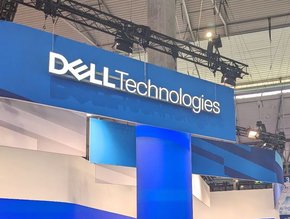Can Boston Dynamics’ Spot robot find commercial niche?

The robotics company Boston Dynamics has commercially released its Spot robot.
In a glossy video quite different to the usual, unadorned, straight-from-the-lab videos that have become YouTube sensations, Boston Dynamics officially announced the availability of the platform while also listing its specifications.
These include a runtime of 90 minutes, a payload of 14kg, a programmable API, the ability to self-right, operating temperatures between -20 and 45 degrees Celsius and IP54 water and dust proofing.
Biomimicry, the modelling of machines on biological organisms, has been a key tenet of Boston Dynamics’ work, and Spot is no different, with a perceptible dog-like quality both the name and the video play up to.
SEE ALSO:
Though in mass production, restrictions remain in place on purchasing the robots, with Boston Dynamics shipping “to select early adopters” only, presumably those in industries which Boston Dynamics predicts Spot to be useful in. On its website, such applications include scanning construction sites for comparison, remotely inspecting oil and gas facilities and potentially scouting disaster areas.
It remains to be seen whether the commercialisation of Boston Dynamics technology will be successful. Previously owned by Google, the company was acquired by SoftBank in 2017. It may come down to a matter of cost. CNN spoke to Chris Atkeson, a roboticist at Carnegie Mellon University, who estimated that the robot would cost businesses as much as a new car – a potentially prohibitive price point.
Straight after the release of the Spot, the company debuted footage of its humanoid Atlas platform performing parkour which has eclipsed the Spot’s announcement in terms of views. Though Atlas is intended as for research, the company is developing two further robots with more self-evident commercial uses. First is the Pick, which is far more recognisable as a typical single-purpose industrial robot. Pick, however, utilises deep-learning to demonstrate a level of autonomy that improves the speed and variety of pickable products. Also targeted towards the packing industry is the Handle, which is able to replicate a human worker as it picks up, moves and stacks items aided by its wheels and deep-learning vision software.
(Image: Boston Dynamics)
- ServiceNow's AI-driven low-code Creator Workflows App Engine
- Executive Q&A with Adil Mohammed, Founder & CEO of VirtuosoAI & Machine Learning
- Insights to automation - should businesses close the loop?Data & Data Analytics
- Furhat Robotics: Bringing social robots into people’s livesDigital Transformation






